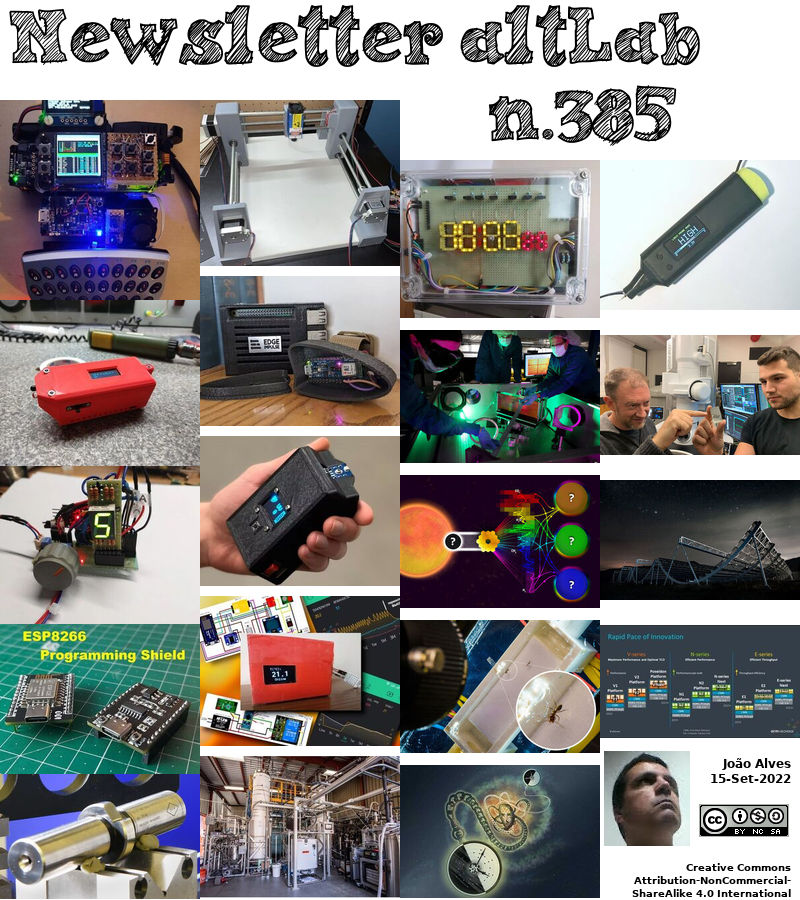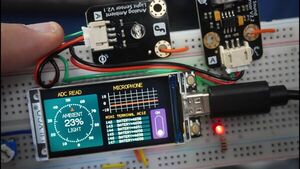2022-09-15 - Nº 385
Editorial
Esta é a Newsletter Nº 385 que se apresenta com o mesmo formato que as anteriores. Se gostar da Newsletter partilhe-a!
Todas as Newsletters encontram-se indexadas no link.
Esta Newsletter tem os seguintes tópicos:
Faz hoje anos que nascia, em 1852, o inventor guiano-americano Jan Ernest Matzeliger. Ele ficou conhecido pela sua máquina de calçado que revolucionou a indústria do calçado ao substituir o trabalho manual de prender a sola à parte superior de um sapato. Deixou a sua terra natal da Guiana holandesa e partiu para a América aos 19 anos de idade. Instalou-se em Lynn, Massachussetts, por volta dos 25 anos de idade, onde se tornou operador de máquinas de coser sapatos. Lá viu o tedioso e lento processo de acabamento do sapato à mão, e resolveu desenvolver uma máquina capaz de fazer esse trabalho de forma mais eficiente. Apesar de ser tão pobre que a obtenção de materiais era difícil, ele fez um modelo de madeira. Obteve uma patente para a sua invenção, emitida a 20 de Março de 1883. Com melhorias, em 1885, tinha um modelo de produção pronto, capaz de produzir sapatos muito mais rapidamente do que os trabalhadores manuais.
Faz também hoje anos que nascia, em 1881, o construtor italiano de automóveis de corrida e de luxo Ettore Bugatti. Ele depois de estabelecer uma fábrica em Molsheim, Alsácia, em 1909, produziu um veículo de baixa potência de grande sucesso para o Le Mans. O mais meticulosamente construído dos seus carros. o Tipo 41, "Golden Bugatti" ou "La Royale" era um dos carros mais caros, dos quais apenas seis a oito foram alguma vez fabricados.
Faz igualmente hoje anos que nascia, em 1886, o engenheiro de minas e matemático francês Paul Lévy. Ele contribuiu para a probabilidade, análise funcional, equações diferenciais parciais e séries. Estudou também geometria. Em 1926 alargou a Laplace a classes funcionais mais amplas. Realizou um trabalho em larga escala sobre equações diferenciais generalizadas em derivadas funcionais.
Faz também hoje anos que nascia, em 1929, o físico teórico americano Murray Gell-Mann. Ele previu a existência de quarks. Foi galardoado com o Prémio Nobel da Física de 1969 pelas suas contribuições para a Física de Partículas. A sua primeira grande contribuição para a física de alta energia foi feita em 1953, quando demonstrou como algumas características intrigantes dos hadrons (partículas que respondem à força forte) podiam ser explicadas por um novo número quântico, que ele chamou de "estranheza". Em 1964, ele (e Yuval Ne'eman) propôs a forma octogonal de definir a estrutura das partículas. Isto levou ao postulado de Gell-Mann sobre o quark, um nome que ele cunhou (de uma palavra em "O Despertar de Finnegan" de James Joyce).
Por fim, faz hoje anos que nascia, em 1932, o químico inglês-americano Neil Bartlett. Ele formou o primeiro composto com um elemento gasoso nobre, o xénon platinofluoreto, XePtF6 (23 Mar 1962), um sólido cristalino amarelo alaranjado, estável à temperatura ambiente através da imersão do flúor de platina no gás xenon. Durante meio século desde que Ramsay descobriu o xénon, este tinha, com os outros elementos do seu grupo na Tabela Periódica, sido conhecido como um gás inerte. Após a descoberta de Bartlett, foi aberto um novo campo de investigação, e outros químicos encontraram outros compostos não só de xénon, mas também os elementos de gás nobre radão e krypton. Os elementos mais pesados dos gases nobres, como os menos inertes, eram susceptíveis de combinação com um elemento altamente reactivo.
E nesta semana que passou foi lançada a versão final do Arduino IDE 2.0. Esta versão tem um editor moderno e proporciona uma melhor experiência global ao utilizador graças a uma interface reactiva e a um tempo de compilação mais rápido. O Serial Monitor e Plotter podem ser utilizados em conjunto, permitindo aos utilizadores ter dois viewports na sua saída de dados. Antes tinha de escolher entre texto e gráficos, enquanto que agora pode ter ambos.
Na Newsletter desta semana apresentamos diversas noticias, artigos científicos, projetos de maker e alguns vídeos interessantes. É apresentado o livro "The Official Raspberry Pi Handbook 2023".
 João Alves ([email protected])
João Alves ([email protected])
O conteúdo da Newsletter encontra-se sob a licença  Creative Commons Attribution-NonCommercial-ShareAlike 4.0 International License.
Creative Commons Attribution-NonCommercial-ShareAlike 4.0 International License.
Novidades da Semana
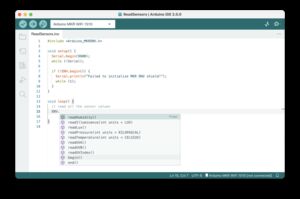
It’s here: please welcome Arduino IDE 2.0
"We’re pleased to announce that as of today Arduino IDE 2.0 has moved to stable and is available for download. Since the launch of the Beta version back in Spring 2021, the feedback received from the active Arduino community has enabled us to focus on what’s meaningful to the widest user-base. It carries a modern editor and provides a better overall user experience thanks to a responsive interface and faster compilation time. Over and above the core features (we’ll get into those in more details later) the IDE 2.0 benefits from a number of enhancements and additional support. The Serial Monitor and Plotter can be used together, enabling users to have two viewports onto their data output. Before you had to choose between text and graphs, whereas now you can have both." [...]
Outras Notícias
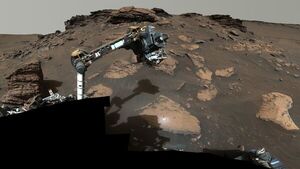
NASA’s Perseverance Rover Investigates Geologically Rich Mars Terrain
"The latest findings provide greater detail on a region of the Red Planet that has a watery past and is yielding promising samples for the NASA-ESA Mars Sample Return campaign. NASA’s Perseverance rover is well into its second science campaign, collecting rock-core samples from features within an area long considered by scientists to be a top prospect for finding signs of ancient microbial life on Mars. The rover has collected four samples from an ancient river delta in the Red Planet’s Jezero Crater since July 7, bringing the total count of scientifically compelling rock samples to 12. “We picked the Jezero Crater for Perseverance to explore because we thought it had the best chance of providing scientifically excellent samples – and now we know we sent the rover to the right location,” said Thomas Zurbuchen, NASA’s associate administrator for science in Washington. “These first two science campaigns have yielded an amazing diversity of samples to bring back to Earth by the Mars Sample Return campaign.” Twenty-eight miles (45 kilometers) wide, Jezero Crater hosts a delta – an ancient fan-shaped feature that formed about 3.5 billion years ago at the convergence of a Martian river and a lake. Perseverance is currently investigating the delta’s sedimentary rocks, formed when particles of various sizes settled in the once-watery environment." [...]
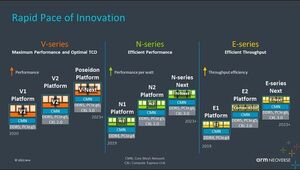
Redefining the global computing infrastructure with next-generation Arm Neoverse platforms
"The demand for data is insatiable, from 5G to the cloud to smart cities. As a society we want more autonomy, information to fuel our decisions and habits, and connection – to people, stories, and experiences. To address these demands, the cloud infrastructure of tomorrow will need to handle the coming data explosion and the effective processing of evermore complex workloads … all while increasing power efficiency and minimizing carbon footprint. It’s why the industry is increasingly looking to the performance, power efficiency, specialized processing and workload acceleration enabled by Arm Neoverse to redefine and transform the world’s computing infrastructure. Building what’s needed, not just what’s next To date, the Neoverse compute portfolio has enabled our partners to adopt Arm-based solutions at a rapid pace to address ever-changing customer and market needs. And today we’re sharing new additions to the Neoverse roadmap that are rooted in scalable efficiency and technology leadership, while reinforcing our commitment to support our partners to continue their rapid pace of innovation." [...]

Functional Safety, Cybersecurity Protection and AUTOSAR Compatibility Features Now Available on 32-bit MCU Based on Arm® Cortex®-M0+ Core
"The PIC32CM JH microcontroller is a 512KB Flash, 5V, Dual CAN FD device that delivers premium features typically only available on more expensive, higher performance devices Manufacturers of electronic systems ranging from vehicles to home appliances are moving towards automating and connecting end applications, spurring the need for industry standards related to functional safety and cybersecurity protection to ensure their products operate safely and securely. To provide manufacturers with an MCU solution equipped with components that meet ISO 26262 functional safety and ISO/SAE 21434 cybersecurity engineering standards, Microchip Technology Inc. (Nasdaq: MCHP) today announces the PIC32CM JH microcontroller (MCU). This is the industry’s first MCU-based on the Arm® Cortex®-M0+ architecture with AUTOSAR support, Memory-Built-In Self-Test (MBIST) and secure boot. The PIC32CM JH is compatible with AUTOSAR, an open software architecture, providing suppliers with the ability to change to lower-level hardware but keep the original application code, making it easier to migrate between different designs. AUTOSAR-ready is designed to streamline the development process and reduce overall costs. When using AUTOSAR, Microchip offers ASIL B microcontroller abstraction layers (MCALs) for functional safety applications — providing the lower-level hardware interface to the MCU." [...]

STMicroelectronics reveals advanced VDA-compliant LIN alternator regulator, raising performance and flexibility of 12V car systems
"STMicroelectronics has introduced the L9918 automotive alternator regulator, with enhanced features to ensure the stability of 12V vehicle electrical systems. The regulator contains a MOSFET to deliver alternator excitation current and a freewheeling diode to handle the rotor current when excitation is turned off. Closed-loop operation with load response control (LRC) and return LRC maintains a consistent voltage as the vehicle’s overall power demand changes continuously. The excitation MOSFET can deliver up to 13A to the coil, which is more than typical alternative regulators can provide and thus improves response to fluctuating demands. In addition, using the latest manufacturing process technology, the MOSFET has superior RDS(on) and so minimizes power dissipation while boosting efficiency. With integrated nonvolatile memory (NVM), the L9918 allows customers to program parameters including the voltage set point and alternator characteristics." [...]

Renesas’ New Resolver 4.0 Catalog Offers 80 Market-Ready Inductive Position Sensor Designs
"Using these Comprehensive Reference Solutions, Customers Can Jumpstart Their Position Sensing System Development at Minimal Cost Renesas Electronics Corporation (TSE: 6723), a premier supplier of advanced semiconductor solutions, today released a catalog of reference designs for its innovative inductive position sensors aimed at automotive and industrial electric motors. With the Resolver 4.0 Catalog, engineers now have a resource of 80 instant designs based on the IPS2 motor commutation sensors, with each reference design targeting a unique motor shaft or pole-pair configuration. These reference solutions come with complete design files, measurement reports, tools and guidelines to help engineers reduce their design learning curve and accelerate the time to hardware production. The Resolver 4.0 catalog offers market-ready solutions that can be implemented in a wide range of applications such as automotive systems, robotics, servo motors, home automation and medical. The reference designs include completed schematics, fully wired PCB designs, and Gerber files, allowing engineers to immediately start building working sensing solutions. Renesas complements these reference designs with software stacks, full tool support, documentation like measurement reports, bill-of-materials and more." [...]
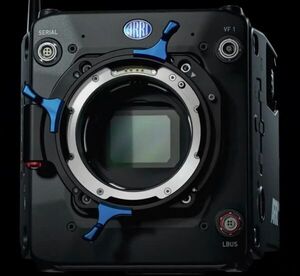
onsemi Imaging Technology Enables Next Era of Digital Cinematography
"The ALEXA 35, ARRI’s newest digital cinema camera, boasts onsemi’s latest CMOS sensor technology to produce industry-leading image quality at a native 4.6K and 120 fps onsemi, a leader in intelligent power and sensing technologies, today announced it developed the customized high-end CMOS sensor for ARRI’s ALEXA 35 camera. The camera uses the ALEV 4 Super 35 4.6K CMOS image sensor from onsemi to deliver a resolution of 4608x3164 pixels (14.6 Mpixel) with a 6.075 um pitch featuring RGB color filters and a maximum frame rate of 120fps. The sensor features onsemi’s latest technology for optimizing pixel response, High Dynamic Range techniques (HDR) and the improvement of pixel uniformity while reading out at high speeds; techniques deployed in mainstream onsemi sensors as well. This latest collaboration between the two companies is another example of onsemi’s strength in developing sensors for high-end cinematography that elevate image quality. This unique high-resolution, large-pixel image sensor with optimized readout techniques result in a 4.6K image, 17-stops of dynamic range at 120 frames per second, producing images with unprecedented quality. The extended Dynamic Range enables higher detail in a high contrast scene in a single frame, resulting in an extraordinary image and color experience." [...]
Ciência e Tecnologia
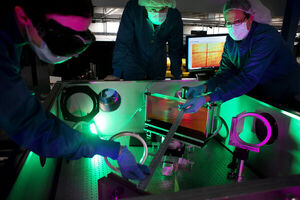
First light at the most powerful laser in the US
"The laser that will be the most powerful in the United States is preparing to send its first pulses into an experimental target at the University of Michigan. Funded by the National Science Foundation, it will be a destination for researchers studying extreme plasmas around the U.S. and internationally. Called ZEUS, the Zetawatt-Equivalent Ultrashort pulse laser System, it will explore the physics of the quantum universe as well as outer space, and it is expected to contribute to new technologies in medicine, electronics and national security. “ZEUS will be the highest peak power laser in the U.S. and among the most powerful laser systems in the world. We’re looking forward to growing the research community and bringing in people with new ideas for experiments and applications,” said Karl Krushelnick, director of the Center for Ultrafast Optical Science, which houses ZEUS, and the Henry J. Gomberg Collegiate Professor of Engineering. The first target area to get up and running is the high-repetition target area, which runs experiments with more frequent but lower power laser pulses." [...]

Through the quantum looking glass
"An ultrathin invention could make future computing, sensing and encryption technologies remarkably smaller and more powerful by helping scientists control a strange but useful phenomenon of quantum mechanics, according to new research recently published in the journal Science. Scientists at Sandia National Laboratories and the Max Planck Institute for the Science of Light have reported on a device that could replace a roomful of equipment to link photons in a bizarre quantum effect called entanglement. This device -- a kind of nano-engineered material called a metasurface -- paves the way for entangling photons in complex ways that have not been possible with compact technologies. When scientists say photons are entangled, they mean they are linked in such a way that actions on one affect the other, no matter where or how far apart the photons are in the universe. It is an effect of quantum mechanics, the laws of physics that govern particles and other very tiny things. Although the phenomenon might seem odd, scientists have harnessed it to process information in new ways." [...]

Tiny, caterpillar-like soft robot folds, rolls, grabs and degrades
"When you hear the term "robot," you might think of complicated machinery working in factories or roving on other planets. But "millirobots" might change that. They're robots about as wide as a finger that someday could deliver drugs or perform minimally invasive surgery. Now, researchers reporting in ACS Applied Polymer Materials have developed a soft, biodegradable, magnetic millirobot inspired by the walking and grabbing capabilities of insects. Some soft millirobots are already being developed for a variety of biomedical applications, thanks to their small size and ability to be powered externally, often by a magnetic field. Their unique structures allow them to inch or roll themselves through the bumpy tissues of our gastrointestinal tract, for example." [...]
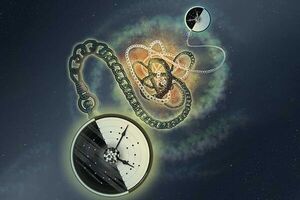
A quantum network of entangled atomic clocks
"For the first time, scientists at the University of Oxford have been able to demonstrate a network of two entangled optical atomic clocks and show how the entanglement between the remote clocks can be used to improve their measurement precision, according to research published this week by Nature. Improving the precision of frequency comparisons between multiple atomic clocks offers the potential to unlock our understanding of all sorts of natural phenomena. It is essential, for example, in measuring the space-time variation of fundamental constants, for geodesy where the frequency of the atomic clocks is used to measure the heights of two locations, and even in the search for dark matter. Fundamental limit of precision Entanglement – a quantum phenomenon in which two or more particles become linked together so that they can no longer be described independently, even at vast distances – is the key to reaching the fundamental limit of precision that’s determined by quantum theory. While previous experiments have demonstrated that entanglement between clocks in the same system can be used to improve the quality of measurements, this is the first time researchers have been able to achieve this between clocks in two separate remotely entangled systems. This development paves the way for applications like those mentioned above, where comparing the frequencies of atoms in separate locations to the highest possible precision is vital." [...]

Dense Liquid Droplets Act as Cellular Computers
"A new study describes the rules by which physical force on cells affects squishy biocomputers inside, and the action of a related kinase known to be overactive as tau tangles form in the brain cells of Alzheimer's patients. An emerging field explores how groups of molecules condense together inside cells, the way oil droplets assemble and separate from water in a vinaigrette. In human cells, "liquid-liquid phase separation" occurs because similar, large molecules glom together into dense droplets separated from the more diluted parts of the fluid cell interior. Past work had suggested that evolution harnessed the natural formation of these "condensates" to organize cells, providing, for instance, isolated spaces for the building of cellular machines. Furthermore, abnormal, condensed -- also called "tangled" -- groups of molecules in droplets are nearly always present in the cells of patients with neurodegenerative conditions, including Alzheimer's disease. While no one knows why such condensates form, one new theory argues that the biophysical properties of cell interiors change as people age -- driven in part by "molecular crowding" that packs more molecules into the same spaces to affect phase separation." [...]
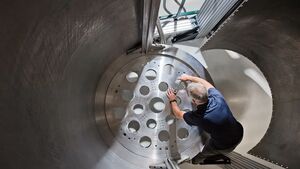
IBM scientists cool down the world’s largest quantum-ready cryogenic concept system
"Project Goldeneye pushes the limits of low-temperature refrigeration while laying the groundwork for the quantum industry’s ability to scale to larger experiments. We create knowledge by exploring reality’s frontiers: we study the coldest, the furthest, the lowest and highest energies, and the smallest things in the universe. But reaching these frontiers is no small feat — typically, it requires building all-new apparatuses that push the limits of modern technology. That’s why we built the world’s largest dilution refrigerator by experimental volume. The super-fridge — internally known as project Goldeneye — is a proof-of-concept for a dilution refrigerator, capable of cooling future generations of quantum experiments. Today’s dilution refrigerators are limited in a number of ways: the size of the quantum physics experiments we can fit inside them; the number of input/output ports; their cooling power." [...]
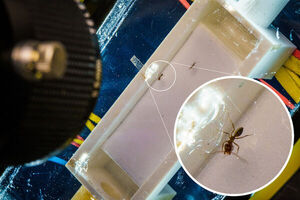
The Physics of Walking is Simpler Than We Thought
"By comparing ants and robots, researchers found that the math for slithering can be applied to most multi-legged creatures too The physics of walking for multi-legged animals and robots is simpler than previously thought. That is the finding described by a team of roboticists, physicists and biologists in the Sept. 5 issue of the Proceedings of the National Academy of Sciences, in a paper titled “Walking is like slithering: a unifying, data-driven view of locomotion.” “This is important because it will allow roboticists to build much simpler models to describe the way robots walk and move through the world,” said paper coauthor Nick Gravish, a faculty member in the Department of Mechanical and Aerospace Engineering at the University of California San Diego. The researchers had previously studied ant walking and wanted to see how their findings could be applied to robots. In the process, they discovered a new mathematical relationship between walking, skipping, slithering and swimming in viscous fluids for multi-legged animals and bots. The team studied several colonies of Argentine ants at UC San Diego, and two different types of multi-legged robots at the University of Michigan. “Argentine ants are very easy to study in the lab,” said paper coauthor Glenna Clifton, a faculty member at the University of Portland, who conducted most of the ant research while she was a postdoctoral scholar in Gravish’s lab at UC San Diego." [...]

3D printed surfaces inspired by nature
"Scientists can use laser radiation to print tiny structures with high precision. This approach enables them to mimic the superpowers of animals and plants and makes them accessible for engineering applications. To survive in extreme habitats, many animals and plants have developed brilliant abilities that we otherwise only know from superheroes in movies. In most cases, their abilities are based on the extraordinary properties of their surfaces. Mimicking these properties offers enormous potential in the engineering field for developing new products and solving technical problems. Research teams from Bochum and Kiel have succeeded in mimicking the structural colour of the famous blue Morpho butterflies using a high-precision 3D printing technology referred to as two-photon polymerization (2PP)." [...]
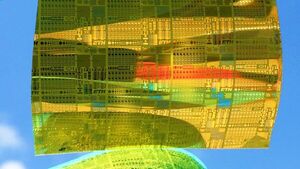
Hitting the bull’s eye
"In the FOXIP project, researchers form Empa, EPFL and the Paul Scherrer Institute attempted to print thin-film transistors with metal oxides onto heat-sensitive materials such as paper or PET. The goal was ultimately not achieved, but those involved consider the project a success – because of a new printing ink an a transistor with "memory effect". The bar was undoubtedly set high: In the research project Functional Oxides Printed on Polymers and Paper – FOXIP for short – the goal was to succeed in printing thin-film transistors on paper substrates or PET films. Electronic circuits with such elements play an important role in the growing Internet of Things (IoT), for example as sensors on documents, bottles, packaging ... – a global market worth billions. If it were feasible to manufacture such transistors with inorganic metal oxides, this would open up a plethora of new possibilities. Compared with organic materials such as the semiconducting polymer polythiophene, explains project leader Yaroslav Romanyuk from Empa's Laboratory for Thin Films and Photovoltaics, the electrons in these materials are much more mobile." [...]

NIST and Google to Create New Supply of Chips for Researchers and Tech Startups
"The U.S. Department of Commerce’s National Institute of Standards and Technology (NIST) has signed a cooperative research and development agreement with Google to develop and produce chips that researchers can use to develop new nanotechnology and semiconductor devices. The chips will be manufactured by SkyWater Technology at its Bloomington, Minnesota, semiconductor foundry. Google will pay the initial cost of setting up production and will subsidize the first production run. NIST, with university research partners, will design the circuitry for the chips. The circuit designs will be open source, allowing academic and small business researchers to use the chips without restriction or licensing fees. Large companies that design and manufacture semiconductors often have ready access to these types of chips." [...]

Researchers at SLAC use purified liquid xenon to search for mysterious dark matter particles
"An enormous vat of pure liquid xenon will help scientists at SLAC and around the globe learn more about the universe. Sitting a mile below ground in an abandoned gold mine in South Dakota is a gigantic cylinder holding 10 tons of purified liquid xenon closely watched by more than 250 scientists around the world. That tank of xenon is the heart of the LUX-ZEPLIN (LZ) experiment, an effort to detect dark matter – the mysterious invisible substance that makes up 85% of the matter in the universe. “People have been searching for dark matter for over 30 years, and no one has had a convincing detection yet,” said Dan Akerib, professor of particle physics and astrophysics at the Department of Energy’s (DOE) SLAC National Accelerator Laboratory. But with the help of scientists, engineers, and researchers around the globe, Akerib and his colleagues have made the LZ experiment one of the most sensitive particle detectors on the planet. To reach that point, SLAC researchers built on their expertise in working with liquid nobles – the liquid forms of noble gases such as xenon – including advancing the technologies used to purify liquid nobles themselves and the systems for detecting rare dark matter interactions within those liquids." [...]
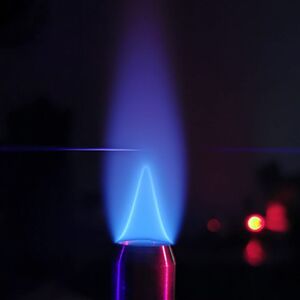
New laser-based instrument designed to boost hydrogen research
"Advance could lead to more environmentally friendly rocket fuels Researchers have developed an analytical instrument that uses an ultrafast laser for precise temperature and concentration measurements of hydrogen. Their new approach could help advance the study of greener hydrogen-based fuels for use in spacecraft and airplanes. “This instrument will provide powerful capabilities to probe dynamical processes such as diffusion, mixing, energy transfer and chemical reactions,” said research team leader Alexis Bohlin from Luleå University of Technology in Sweden. “Understanding these processes is fundamental to developing more environmentally friendly propulsion engines.” In the Optica Publishing Group journal Optics Express, Bohlin and colleagues from Delft University of Technology and Vrije Universiteit Amsterdam, both in the Netherlands, describe their new coherent Raman spectroscopy instrument for studying hydrogen. It was made possible due to a setup that converts broadband light from a laser with short (femtosecond) pulses into extremely short supercontinuum pulses, which contain a wide range of wavelengths. The researchers demonstrated that this supercontinuum generation could be performed behind the same type of thick optical window found on high-pressure chambers used to study a hydrogen-based engine." [...]

Study: Astronomers risk misinterpreting planetary signals in James Webb data
"Refining current opacity models will be key to unearthing details of exoplanet properties — and signs of life — in data from the powerful new telescope. NASA’s James Webb Space Telescope (JWST) is revealing the universe with spectacular, unprecedented clarity. The observatory’s ultrasharp infrared vision has cut through the cosmic dust to illuminate some of the earliest structures in the universe, along with previously obscured stellar nurseries and spinning galaxies lying hundreds of millions of light years away. In addition to seeing farther into the universe than ever before, JWST will capture the most comprehensive view of objects in our own galaxy — namely, some of the 5,000 planets that have been discovered in the Milky Way. Astronomers are harnessing the telescope’s light-parsing precision to decode the atmospheres surrounding some of these nearby worlds. The properties of their atmospheres could give clues to how a planet formed and whether it harbors signs of life." [...]

Mysterious diamonds came from outer space, scientists say
"Strange diamonds from an ancient dwarf planet in our solar system may have formed shortly after the dwarf planet collided with a large asteroid about 4.5 billion years ago, according to scientists. The research team says they have confirmed the existence of lonsdaleite, a rare hexagonal form of diamond, in ureilite meteorites from inside the dwarf planet. Lonsdaleite is named after the famous British pioneering crystallographer Dame Kathleen Lonsdale, who was the first woman elected as a Fellow to the Royal Society. The team – with scientists from Monash University, RMIT University, CSIRO, the Australian Synchrotron and Plymouth University – found evidence of how lonsdaleite formed in ureilite meteorites and published their findings in the Proceedings of the National Academy of Sciences (PNAS) journal. The study was led by geologist Professor Andy Tomkins from Monash University. One of the senior researchers involved, Professor Dougal McCulloch from RMIT, said the team predicted the hexagonal structure of lonsdaleite’s atoms made it potentially harder than regular diamonds, which had a cubic structure." [...]
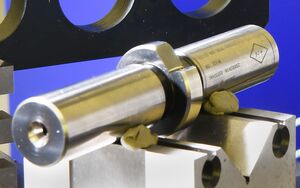
Back to the Future: Gear Edition
"After 30 years, NIST is once again calibrating gear artifacts, which could improve electric cars. As mechanical objects, gears have been around for so long that people may take them for granted. But gears are sophisticated parts that play a vital role in cars, airplanes, construction and mining equipment, food processing, clock making and more. And companies are still trying to make them better — specifically, quieter. As electric vehicles become more popular, the industry is pushing for gears that have tighter and tighter tolerances — in other words, smaller differences between the maximum and minimum sizes in a batch of gears that are considered acceptable for sale. Gears that fit together better make less noise, transfer power more efficiently and last longer." [...]

Moral illusions may alter our behaviour
"Just as optical illusions can fool the eye to present a distorted image of reality, moral illusions can fool our decision-making ability, making us more selfish. This is the conclusion of a newly presented doctoral thesis from Linköping University. But the results also show that we are more likely to vote for the good of all when taking part in democratic decisions. “We tend to use what we can call a ‘moral wiggle room’ to justify selfish decisions. This means that we can act selfishly in certain situations, without feeling that our actions are morally wrong,” says Kajsa Hansson, newly promoted doctor in economics at Linköping University, with a thesis entitled Moral Illusions. In the thesis, she examines several aspects of what she terms ‘moral illusions’, and compares them to optical illusions." [...]

New phases of water detected
"Scientists at the University of Cambridge have discovered that water in a one-molecule layer acts like neither a liquid nor a solid, and that it becomes highly conductive at high pressures. Much is known about how ‘bulk water’ behaves: it expands when it freezes, and it has a high boiling point. But when water is compressed to the nanoscale, its properties change dramatically. By developing a new way to predict this unusual behaviour with unprecedented accuracy, the researchers have detected several new phases of water at the molecular level. Water trapped between membranes or in tiny nanoscale cavities is common – it can be found in everything from membranes in our bodies to geological formations. But this nanoconfined water behaves very differently from the water we drink." [...]

Interwoven: Charge and magnetism intertwine in kagome material
"New physics discovered where crystal patterns match weave of traditional baskets. Physicists have discovered a material in which atoms are arranged in a way that so frustrates the movement of electrons that they engage in a collective dance where their electronic and magnetic natures appear to both compete and cooperate in unexpected ways. Led by Rice University physicists, the research was published online today in Nature. In experiments at Rice, Oak Ridge National Laboratory (ORNL), SLAC National Accelerator Laboratory, Lawrence Berkeley National Laboratory (LBNL), the University of Washington (UW), Princeton University and the University of California, Berkeley, researchers studied pure iron-germanium crystals and discovered standing waves of fluid electrons appeared spontaneously within the crystals when they were cooled to a critically low temperature. Intriguingly, the charge density waves arose while the material was in a magnetic state, to which it had transitioned at a higher temperature. “A charge density wave typically occurs in materials that have no magnetism,” said study co-corresponding author Pengcheng Dai of Rice." [...]
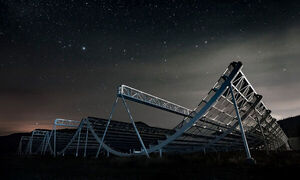
Mapping The Milky Way
"NESTLED IN A REMOTE VALLEY JUST AN HOUR outside of Kelowna, amongst ridges and plateaus where cattle graze, Dr. Alex Hill and his students are watching the stars. But they’re not star-gazing for the fun of it; rather, the team is using a state-of-the-art telescope at Canada’s largest radio observatory—the Dominion Radio Astrophysical Observatory (DRAO)—to understand the origins of our universe. “What motivates me on a day-to-day basis is just pure curiosity about understanding how the universe and our galaxy fit together, and how stars form,” explains Dr. Hill, an Assistant Professor in the Irving K. Barber Faculty of Science. “The universe is 75 per cent hydrogen and 23 per cent helium. The remaining two per cent consists of everything else we’re made of—like carbon, oxygen, nitrogen and iron—and that’s all created by nuclear fusion in our stars.” His research covers billions of years, from birth to death. Stars die in various ways, and depending on the size of the star it can be quite violent or very gentle, Dr. Hill adds." [...]
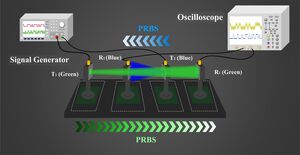
New multi-channel visible light communication system uses single optical path
"New design saves cost and space, could lead to compact light-based computer processors Researchers have demonstrated a new visible light communication system that uses a single optical path to create a multi-channel communication link over the air. This approach could be used as a backup communication link or for connecting Internet of Things devices. “Today’s free-space optical communication systems typically use two separate links with separate optical paths to establish two channels,” said research team leader Yongjin Wang from Nanjing University of Posts and Telecommunications in China. “This new communication mode can save half the channel space, cost and power by using a single link.” The researchers describe their new approach in the Optica Publishing Group journal Optics Letters. It is based on devices called multiple quantum well (MQW) III-nitride diodes that can emit and detect light at the same time. “This technique could enable light-based communication functions to be highly integrated onto a chip, which could also be used to reduce the size of circuit boards, making them cheaper and more portable,” said Wang." [...]
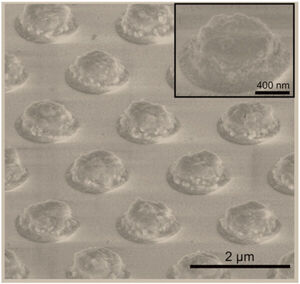
Optical rule was made to be broken
"Rice engineers’ formula IDs materials for virtual reality, 3D displays If you’re going to break a rule with style, make sure everybody sees it. That’s the goal of engineers at Rice University who hope to improve screens for virtual reality, 3D displays and optical technologies in general. Gururaj Naik, an associate professor of electrical and computer engineering at Rice’s George R. Brown School of Engineering, and Applied Physics Graduate Program alumna Chloe Doiron found a way to manipulate light at the nanoscale that breaks the Moss rule, which describes a trade-off between a material’s optical absorption and how it refracts light. Apparently, it’s more like a guideline than an actual rule, because a number of “super-Mossian” semiconductors do exist. Fool’s gold, aka iron pyrite, is one of them. For their study in Advanced Optical Materials, Naik, Doiron and co-author Jacob Khurgin, a professor of electrical and computer engineering at Johns Hopkins University, find iron pyrite works particularly well as a nanophotonic material and could lead to better and thinner displays for wearable devices." [...]
Documentação
A documentação é parte essencial do processo de aprendizagem e a Internet além de artigos interessantes de explorar também tem alguma documentação em formato PDF interessante de ler. Todos os links aqui apresentados são para conteúdo disponibilizado livremente pelo editor do livro.

The Official Raspberry Pi Handbook 2023
"Discover the true potential of Raspberry Pi with the new, official Handbook 2023. With over 200 pages of amazing projects, fun tutorials, practical guides, and clear reviews, it has everything you need to master Raspberry Pi! Inside The Official Raspberry Pi Handbook 2023 - QuickStart guide to setting up your Raspberry Pi computer - Make stuff with Raspberry Pi Pico W - Incredible projects built by the global Raspberry Pi community - Find the right kit and products for your dream builds - Get creating with our comprehensive tutorials and guides - Over 200 pages of essential advice! " [...]
Projetos Maker
Diversos Projetos interessantes.
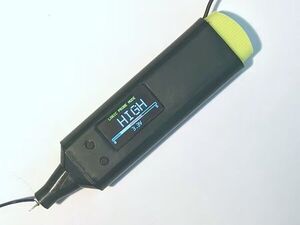
uProbe - simple logic probe
"uProbe is a simple logic/oscilloscopic probe in a highlighter case. In this article I want to tell you about my DIY logical probe - uProbe. It is simple enough because it is based on a microcontroller. As you can see from the photo, this probe is assembled in the case of highlighter pen, so it is very compact. It does not require an external power source, because it is powered from a Li-ion battery. This probe is controlled by two buttons." [...]
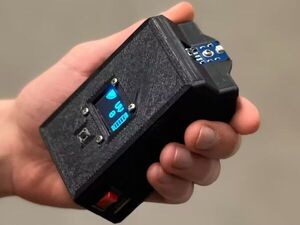
Portable and rechargeable Ultraviolet (UV) radiation meter
"A lightweight, reliable, and completely portable ultraviolet (UV) radiation meter. Ever since suffering severe chemical burns, I could not expose myself to sunlight and ultraviolet radiation. Knowing how to deal with sunlight is an essential skill for anyone in similar situations, so I designed this portable UV meter and donated a dozen units to patients of the burn center in which I was hospitalized. Still, I believe this can help anyone (burn victim or not) to deal with ultraviolet radiation exposure since it can have significant negative health effects, such as early aging of the skin and damage that can lead to skin cancer. Therefore, it is crucial to be able to measure your exposure to UV in your daily life, especially in places you spend a lot of time, such as your home, workplace, school, etc -- UV radiation is present in places you would never expect. It is also important to know the intensity of UV radiation so you can take the proper measures to protect yourself." [...]
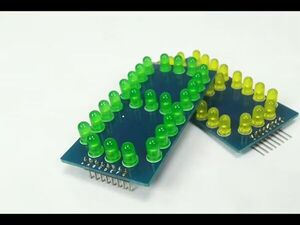
DIY 7 Segment Display
"In this interesting project we will see how to create a DIY(Do it Yourself) 7 segment. In this interesting project we will see how to create a DIY(Do it Yourself) 7 segment which is comparably larger than the traditional 7 segment available in the market. Before diving into the DIY 7 segment let’s first understand about What is a 7 segment is and how it works. What is 7 Segment? A 7 Segment display is nothing but a combination of LED’s in segments. In a 7 Segment display there are 7 segments named as A, B, C, D, E, F & G." [...]

Mini-Deck
"A mini folding cyberdeck based around a Raspberry Pi Zero 2 W, a Zero4U USB Hub, a DreamGear MiniKey, and an Adafruit Mini PiTFT 1.3" This is a little project I've been working on and off for a few months now. The goal was to build a tiny cyberdeck that could fit in my pocket and would have USB expansion ports for peripherals. I also wanted it to be fully modular with minimal soldering so that parts can be easily upgraded/replaced with minimal effort. Some notable features include: - An 18650 LiPo battery that also acts as the pin for the folding hinge mechanism - An Arduino Pro Micro and USB hub board located under the keyboard that uses a 2-axis analog joystick to emulate a mouse, and two tac buttons for right and left click - A custom tac button board with seven buttons mapped to GPIO, to emulate keys that aren't on the keyboard - An Adafruit BME688 Temperature, Humidity, Pressure and Gas Sensor, located on the left and connected via Qwiic/Stemma QT connector - Secondary OLED display with BME688 sensor readings - Three USB ports at the top that can be used for expansion dongles such as audio, Ethernet, SDR, etc. - An Adafruit Zero Spy Camera module located on the right side (Accessible via HTTP stream) - An Adafruit DS3231 Precision RTC - Simultaneous WiFi AP & client mode (can connect to a network via WiFi or Ethernet, and also broadcast its own SSID that can be connected to as an access point)" [...]
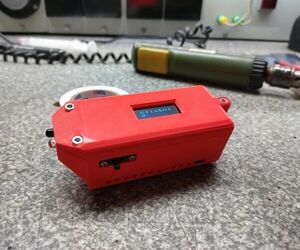
DIY Non-Contact Tachometer (RPM Meter) With Arduino and IR Sensor
"A RPM meter is a simple device that is especially useful for example in a machining workshop to meassure the RPM of a machine's spindle and thus determine the surface speed of a tool or workpiece. I decided to build this one device after seeing a video by GreatScott, but unfortunately his design did not work well for me. I only took the basic principle of the project from his work and modified and improved it so that I would be happy with it. Supplies To make this project, you will need: - 1x Arduino Nano - 1x IR distance sensor module - 1x 0,91" 128x32 OLED display module - 1x 90 degree tactile switch - 1x slide switch - 1x TP4056 charging module with a mini USB connector - 1x Li-ion battery (I used a 48x30x6 mm, 900 mAh one) - Project PCB (single sided, can be made at home, if you know how) - Some resistors and capacitors - Some screws, washers, nuts and stand-offs - 3D printed case (made of 5 parts)" [...]
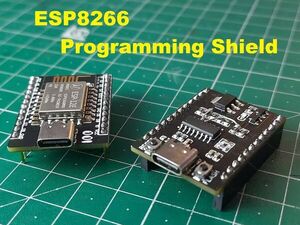
ESP8266 Programming Shield is Insane
"This is an amazing approach to program these small power microcontroller without spending a lot of money on development shields. I am using ESP8266 module in lots of projects. But always I have to use development board for that. ESP8266 development board came as NODEMCU. Which has onboard programming IC, controlling circuitry, voltage regulators, USB port and ESP12E microcontroller. This board comes at a price of $7 to $15 depending upon the quality and brand." [...]
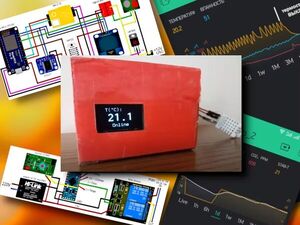
Wi-Fi programmable room thermostat with air quality monitor
"Wireless programmable via Wi-Fi room thermostat with air quality monitor and other useful features. Story A commercially available wireless room thermostat works in the autonomous heating system of my apartment. The system, of course, functions without it: the thermostat was bought to save gas consumption and increase comfort. The thing is very useful, but, in my opinion, somewhat outdated. It was decided to assemble something similar to the purchased thermostat, after adding more convenient settings and an Internet connection to the thermostat circuit. Acquaintance Features and characteristics: - Communication between the thermostat nodes is carried out over the air at radio frequency." [...]
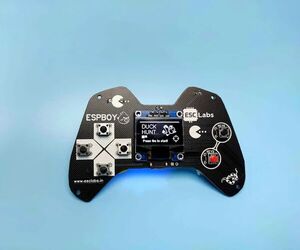
Espboy - Esp12E Based Gaming Console
"Hello there, In this tutorial, I will make a gaming console using an esp12e and OLED display. With this console, We can play different types of retro games like snake, space war, duck hunt etc. so let's get started with the tutorial. Supplies: - ESP12E/12F - 128*64 OLED - BUTTON SWITCH*6 - BUZZER - 3.3V AMS1117 REGULATOR - 0805 SMD RESISTORS-10K*12 - 0805 SMD RESISTORS-1.5K*2 - 0805 SMD RESISTORS-1K*2 - 0805 SMD RESISTORS-1.2K*1 - 0805 SMD CAPACITOR-100NF*2 - TP4056 IC - DW01A or FS312F-G - FS8205 - SWITCH*1 - CUSTOM PCB" [...]

Measuring Air Quality with an Accelerometer
"One of the powers of machine learning is the ability to analyze variables indirectly by measuring a completely different one. Mov to IAQ! The problem Sometimes, in the development of our work, we need to monitor some physical variable of a process, and either because measuring it directly is not safe or we simply do not have the corresponding sensor to do it, we are limited to sampling it. In some cases in this process, there are other variables that are indirectly correlated with the one that we cannot measure, which we do have the possibility of monitoring. As a proof of concept to this case, I show you how I determine the air quality based on how an air purifier vibrates while cleaning impurities and gases in the environment automatically. For this, I trained a neural network putting the purifier in its 3 speeds and capturing its vibrations in each case, when the purifier is configured in automatic mode, it selects one of its speeds depending on how much the environment has to be cleaned, hence the relationship between air quality and the characteristic vibrations of each speed." [...]

Electronic MasterMind Game
"A battle of wits and logic between two players. Break the secret code. This is an electronic version of the classic 70s Super Master Mind board game. The object is to guess the code that has been selected by the computer in as few moves as possible using clues given at each turn. Materials - Rasberry Pi Zero WH - SD Card - Adafruit 16x32 LED Matrix Panel (6mm pitch) - Adafruit Matrix Hat (or Bonnet) - 7x F-F Dupont Wires - Small length of Stiff wire - 6x 10mm Buttons - 2.5mm Header block - 5v 3A Power Supply - Female Socket barrel jack power connector 5.5x2.1mm - Short wire Jack plug connector male 5.5mm x 2.1mm - Brown, Transparent and Red PLA (or colours of choice)" [...]
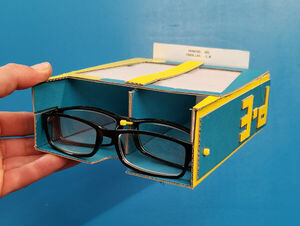
Reading Glasses Stereoscope
"Getting older has its downsides and one of them is deteriorating eyesight. Therefore, it's no surprise that my interest in the reading glasses section in 1€-shops grew over the last few years. The optical quality of cheap ready-made reading glasses is quite good and that made me wonder if those lenses could be also used for other purposes. The result of these thoughts is a new take on a rather old invention: a DIY reading glasses stereoscope. When looking at a stereo photo through this apparatus, each eye is presented a slightly different picture and the two individual photos merge in the viewer s brain into one single image that appears as a three-dimensional scenery. Since this is a very simple, yet fascinating device, I thought that it would be nice if others can build it, too." [...]
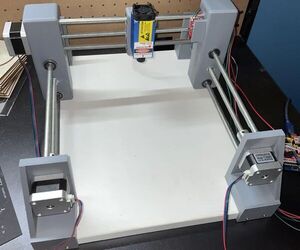
Budget 2-Axis CNC Build
"Hi, in this instructable I will go over how to create a 2-Axis CNC machine. This particular design utilizes parts which can be purchased at local hardware stores, reducing the price greatly. It also uses 3d printed parts which allow for customization and reduces the price even more. This design reduces the price of a typical 2-Axis laser cutter by approximately $100-$200 while maintaining similar quality. Here are the supplies needed with costs relative to the amount used One roll of filament ($20) One 5/16 in x 36 in Threaded Rod ($4.36 from Home Depot) One 5/16 in x 72 in Round Rod ($14.93 from Home Depot) Fifteen 8x22x7 Bearings ($4.14 adjusted from a $13.79 50-pack on Amazon) Three Stepper Motor Couplings ($5.40 adjusted from an $8.99 5-pack on amazon) 16 in x 13.5 in wood board (Left over from IKEA furniture) Screws, Nuts, and Bolts (~$5, Screws, nuts, and bolts were used from various screw kits already on hand) Sixteen #5 x 5/8 in wood screws Six 5/16-18 Hex Nuts Ten M3x20 Machine Screws Eight M3x16 Machine Screws Electronics Arduino GRBL CNC kit - Includes End-stops, Cables, Arduino Uno, Stepper Motor Drivers, and Jumper Caps. ($20.99 by Keeyees on Amazon) Three Nema 17 Stepper Motors ($24.99 on Amazon) 5 amp 12 Volt power supply ($10.99 on Amazon) Optional - I used a laser module for this build since I had one from a 2-in-one 3018 CNC, however, this CNC could be used with a drag knife or pen or make a cutter or a pen plotter respectively." [...]
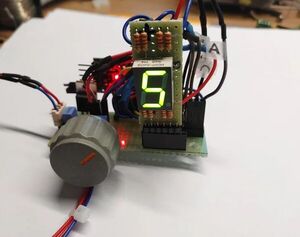
Digitized Audio Analog Volume
"Maybe this kind of break-out circuit can be utilized for making other complex and more useful devices or equipment. The potentiometer is a typical analog control device through changing resistance values. Therefore many audio devices such as amplifiers use it for controlling audio output volume. When turning the wiper (moving contact above the resistance strip), the output terminals resistance value becomes lower. For old generations, this analog fashion of device control is quite familiar. When using a knob having a scale mark (the orange strip in the picture above), we can crudely estimate how much change is made by turning the wiper terminal of the potentiometer." [...]
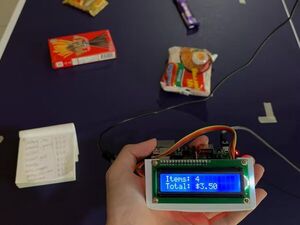
Smart Cashier with Edge Impulse FOMO
"Self checkout smart cashier using object detection to calculate number of items and total price for your purchase. In this project I’m taking advantage of FOMO (Faster Objects, More Objects) algorithm that’s really fast and efficient in object detection. The algorithm is suitable for recognizing the different types of objects that’s placed on the cashier table without the use of barcode and is able to output the total price of items. 96x96 pixel and grayscale color depth provides enough data to make this project work. The model is exported into a Python program which is deployed to a Raspberry Pi, so it can be run locally. By running the machine learning model on the edge, this device will use less energy, less human labour, and cut down hardware cost overall." [...]

Early detection of workers falls with Machine Learning
"Fall detection prototype with Arduino clients, Raspberry Pi server and Machine Learning. “I'm going, down, down, down, down, down. Yes, I've got my feet in the window. Got my head on the ground” Going down (Freddie King) Falls could be dangerous in any situation but for certain working scenarios, consequences are definitely worst, therefore came the idea of developing a Machine Learning fall detection/report system. Each worker will have a small TinyML device in charge of detecting falls with accelerometer data and reporting to a server through Bluetooth. The server will be a Raspberry Pi running a Python script that scans specific BT announcements, parse fall information and store it into a SQL Lite database for reports and alerts." [...]

Decimal to Hexadecimal Converter
"This project shows how to convert a Decimal number into a Hexadecimal number using Arduino This project shows how to convert a Decimal number into a Hexadecimal number. The Decimal number is fed to the Arduino through a 4x4 Keypad. Arduino then converts this Decimal number to its Hexadecimal equivalent. These numbers are displayed on a Liquid Crystal Display and Serial Monitor. " [...]

MPU9250 & MPU9265 calibration 9-DOF
"MPU9250 & MPU9265 calibration 9-DOF Gyro Accelerator Magnetometer Module with Arduino on Unity 3d A method for calibrating an on-body 9 Degree of Freedom (DOF) Inertial Measurement Unit (IMU) is proposed. The proposed system uses a single 3D position sensor, the earth’s ambient gravity vector, the earth’s magnetic field vector, and a semi-random motion sequence for calibration. The proposed method performs sequential calibration of each of the sensors and transports magnetic field vector values on unity3d to move object 3d (Earth)" [...]

Electric Limiter
"We are building a device through which we can monitor the usage of electricity of a device and also tell the device to remind us if that app Overview A device used to measure the voltage, current, and overall power consumption of an appliance to monitor the regular usage of electricity. Background Monitoring the voltage consumption and variations depending upon the appliances to keep track of the overall utilization is a time-consuming and costly process as it involves installing separate devices for each purpose. Using IoT-based equipment we can build a single and more efficient gadget, optimizing the attributes as well. All the more, it has a wide range of applications and diverse practical use stretching from a household management criterion to the basic building block of a much larger industrial project. Specification This specially designed power meter can be attached externally to any appliance with no extra effort and hardware required. Description and Procedure The wiring schematic is straightforward." [...]

Digital Clock With 7-segment LED Display
"The most common 7-segment application is making the digital clock. There are various commercial 7-segment parts available but their size is not big enough to make a wall mount type of digital clock. Thats why Im using the small square shape of LEDs for making big size and customized 7-segment-based digital clock. Every day in the morning, frequently I need to check the clock to catch the company commuter bus going to my office. (About 45Km from my home) Therefore, the digital clock is quite a useful device among the all DIY results from my all previous projects. This is the first useful digital clock that supports the reliable and sustained operation." [...]

Digital Light Pipes Fiber Optic Clock
"Inspiration for this clock struck 6 months ago after seeing @ItsMrJP 's awesome hot air balloon prints. I wanted to build something functional that would highlight the beauty of the thick side glow fiber optic pieces. Originally I though of enclosing the clock so the pipes couldn't be disturbed, but after much trial and error, I decided to keep the back open for a clear view of the strands. After posting some initial sketches on Twitter I got some very valuable advice and feedback from @maketvee and @ItsMrJP. Thanks to these guys for their help! So, how to make it." [...]
Secção Videos
Videos interessantes.
That's all Folks!



